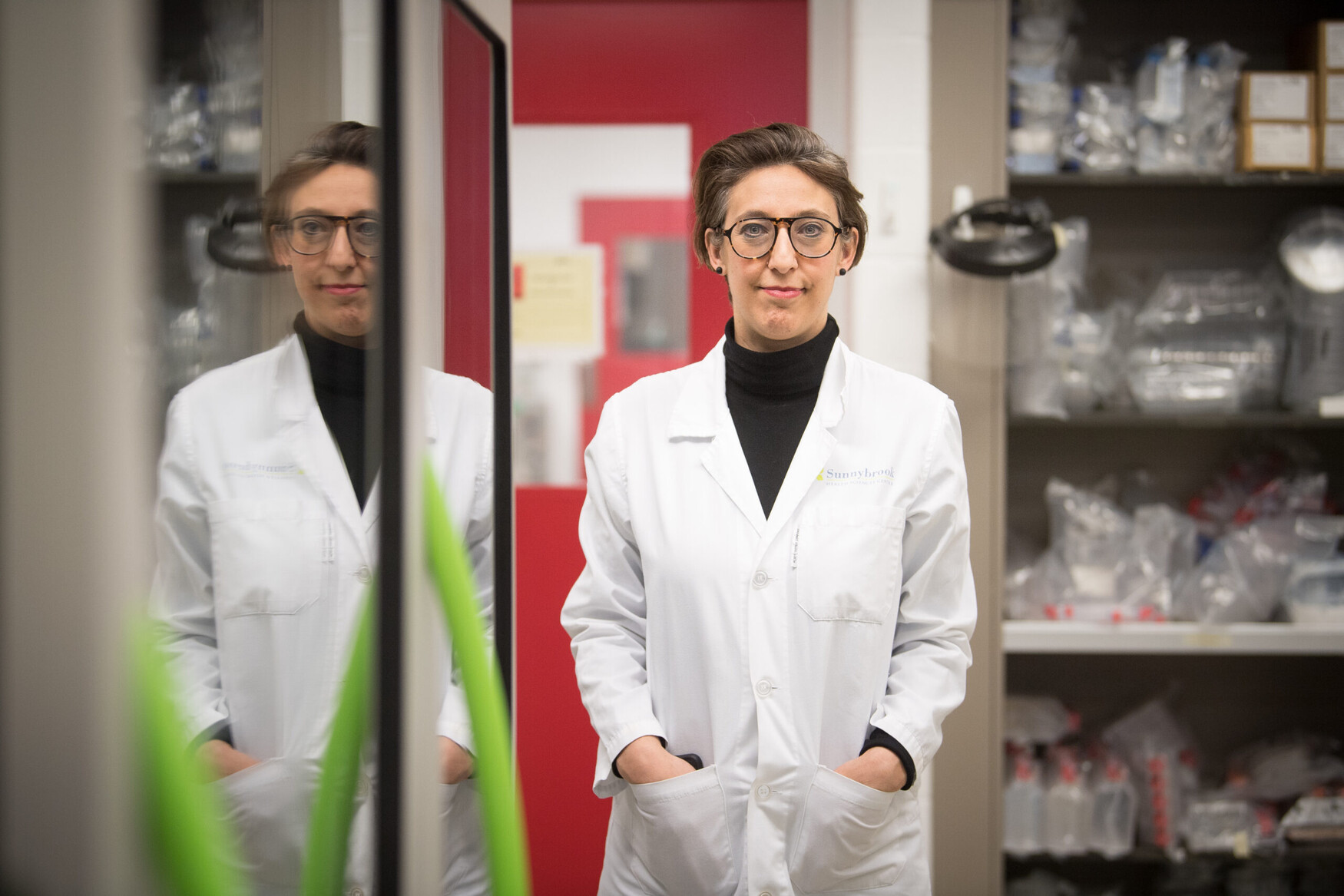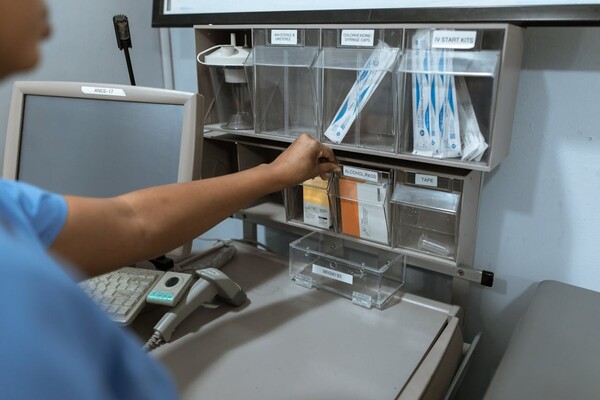Main Second Level Navigation
Breadcrumbs
- Home
- News & Events
- Recent News
- How worried should I be about bird flu?
How worried should I be about bird flu?
An expert Q&A with Samira Mubareka

Last week, the city of Brampton confirmed that two dead waterfowl found in the city had tested positive for highly pathogenic avian influenza (HPAI) virus, or bird flu. This follows earlier reports of cases detected in nearby Halton and Niagara Regions, adding the Greater Toronto Area to the growing list of places affected by the virus. According to the latest estimates from the Canadian Food Inspection Agency, over 7 million birds in flocks across the country have been impacted by HPAI, including nearly 750,000 in Ontario.
As its name implies, HPAI typically infects birds but since early 2022, there have been growing reports of mammals getting infected and dying of influenza infection across a large geographic area. These mammals range from small land animals like raccoons and skunks to large carnivores like bears and mountain lions, as well as marine mammals like sea lions and dolphins. The illnesses are caused by the H5N1 strain of bird flu that is currently circulating across multiple continents.
To learn more about the bird flu outbreak and what we can do to prepare, we spoke to Samira Mubareka, an infectious diseases physician, medical microbiologist and scientist at Sunnybrook Research Institute. She is also an associate professor in the department of laboratory medicine and pathobiology in the Temerty Faculty of Medicine at the University of Toronto and a member of the U of T-based Emerging and Pandemic Infections Consortium (EPIC). Her research uses a collaborative One Health approach to conduct surveillance in wildlife and look at the biology of emerging viruses and transmission between species, including humans.
EPIC: How widespread is bird flu right now?
SM: The level of avian influenza activity we’re seeing at the moment is unprecedented. To step back a bit, the first cases in North America were reported in late 2021 in birds in Newfoundland, and from there, it spread along the eastern seaboard into the United States along Atlantic flyways. Subsequently there were cases reported in the west of Canada and the United States, followed by cases in Central and South America. Beyond affecting wild and farmed birds, we are seeing spillover of HPAI into mammals, many of whom die of severe neurological complications. There has also been renewed focus on HPAI because a reported outbreak among farmed mink in Spain, with mammal-to-mammal transmission, and large die-offs of marine mammals, including sea lions. The virus also appears to be reassorting, or exchanging genetic material among H5N1 lineages. All of these represent red flags that reflect an amount of viral activity that we really haven’t seen before. We’ve also never seen this level of bird depopulation, both from die-offs and as a control measure. This has potential to impact biodiversity, wildlife health and conservation, as well as food costs and security. There have been a significant number of outbreaks, including here in Ontario, and some of them have been fairly close to densely populated areas. Having said all this, it is important to underscore that the risk remains low for humans, and that we have not had any human cases in Canada. Regardless, we need to prepare for that possibility.
EPIC: H5N1 made the news in 2003 and 2014 but in both those instances, the outbreaks were relatively contained. What’s changed this time that is causing it to be so widespread?
SM: That’s a little bit harder to determine because there could potentially be multiple factors. There may be some characteristics that are specific to this strain of H5N1 that are enabling this level of viral activity. One thing we do know is that bird populations are highly mobile and often exchange viruses when they’re migrating and co-mingling at migration sites, which provides an ecological context for viral reassortment and selection. Having said that, these birds migrate every year so why is this so different? I don’t know that we’ll get to the bottom of that without more research. People have started to look at how influenza virus pathogenesis is changing in these birds and how migration affects bird immunity, but what we don’t understand are some of the intersections between the virus and other potential exposures and ecological factors that the birds are encountering during migration or at their overwintering sites. I think there’s a lot to be learned and this is where a One Health approach could be instrumental.
EPIC: On the human side, can you tell me a little bit about how H5N1 affects people and what clinical interventions are available?
SM: With people, unsurprisingly, there’s a range of clinical symptoms. Some people will experience little to no symptoms, but we don’t know exactly what proportion are asymptomatic, have mild symptoms or more severe symptoms with poor outcomes. Frequently people have quoted mortality rates of between 40% and 60% for this virus, which is very high, but that could be due to biases from past events where only the most severe cases were identified. Like with other influenza viruses, this virus could manifest as an upper respiratory tract infection, or severe viral pneumonia with multi-system organ involvement and/or a severe neurological syndrome. As healthcare providers, we need to be prepared for a range of symptoms. The good news is that I’m not aware of any widespread antiviral resistance. In terms of prevention, there is no vaccine specific to H5N1 available for Canadians at this moment, but we still recommend the seasonal influenza virus vaccine. Seasonal influenza vaccination reduces the burden of seasonal influenza, and it may also reduce the likelihood of H5N1 mixing with seasonal influenza viruses and potentially reassorting to become more transmissible or severe in humans.
EPIC: What should individuals and health care providers be thinking about in terms of risk factors for H5N1?
SM: There are a few different risk factors and they’re generally related to animal exposure. One, obviously, is to have been in direct contact with animals that were known to have H5N1. People working in certain occupations like veterinary medicine and farming, particularly poultry farming, as well as anyone working directly with wild birds and other wildlife are also considered at higher risk of being exposed.
EPIC: You recently received some funding support from EPIC to conduct risk assessment research on highly pathogenic avian influenza. Can you tell us about that work?
SM: Absolutely. We know that in Canada, the virus is reassorting which means it is exchanging genetic materials with other viruses. Do these new pieces of genetic material cause the virus to behave differently? Scientists at the National Center for Foreign Animal Disease and Public Health Agency of Canada are leading the work to try and understand that and the risks posed by these new variants. We are collaborating with them and with EPIC member Theo Moraes, who has been central to that work. Theo’s team has developed a way to take cells from inside someone’s nose and grow them in the lab. These cells serve as a model to understand how well viruses replicate and in turn, how much of a risk they could pose to people. This work also feeds into a grant we just received from the Canadian Institutes of Health Research on using a collaborative One Health approach to zoonotic virus detection and risk assessment at the wildlife-human interface.
EPIC: How worried are you about the bird flu situation right now? And how should we be preparing?
SM: I’m more worried now than I was a few months ago because there are so many reports of spillover from birds to mammals. Hearing about human cases, even sporadic ones, is another red flag. We’re sufficiently concerned that we’ve started preparatory activities like getting our sequencing protocols ready. I’m also worried about the impacts on wildlife health. When you have wildlife populations that are dying off, that in and of itself should have us concerned, regardless of whether humans are getting sick.
I think every one of these events is a reminder that we should be preparing. It’s important to note that right now, the risk to individuals is still low, but that can change anytime. Let’s not to wait for it to change before we start preparing. We should be more proactive in surveillance and looking at things like vaccine and antiviral development, both for poultry and for humans. Vaccinating poultry is not as straightforward as you might think because there are trade implications. The fact that we’re seeing new HPAI viruses in Canada underscores the importance of ongoing surveillance. We also need to do a better job of communicating to frontline healthcare providers, especially those working in areas where the potential for a spillover from animals to humans is high. Enhanced efforts towards surveillance, medical countermeasures, communications and research are all steps in the right direction.
News


